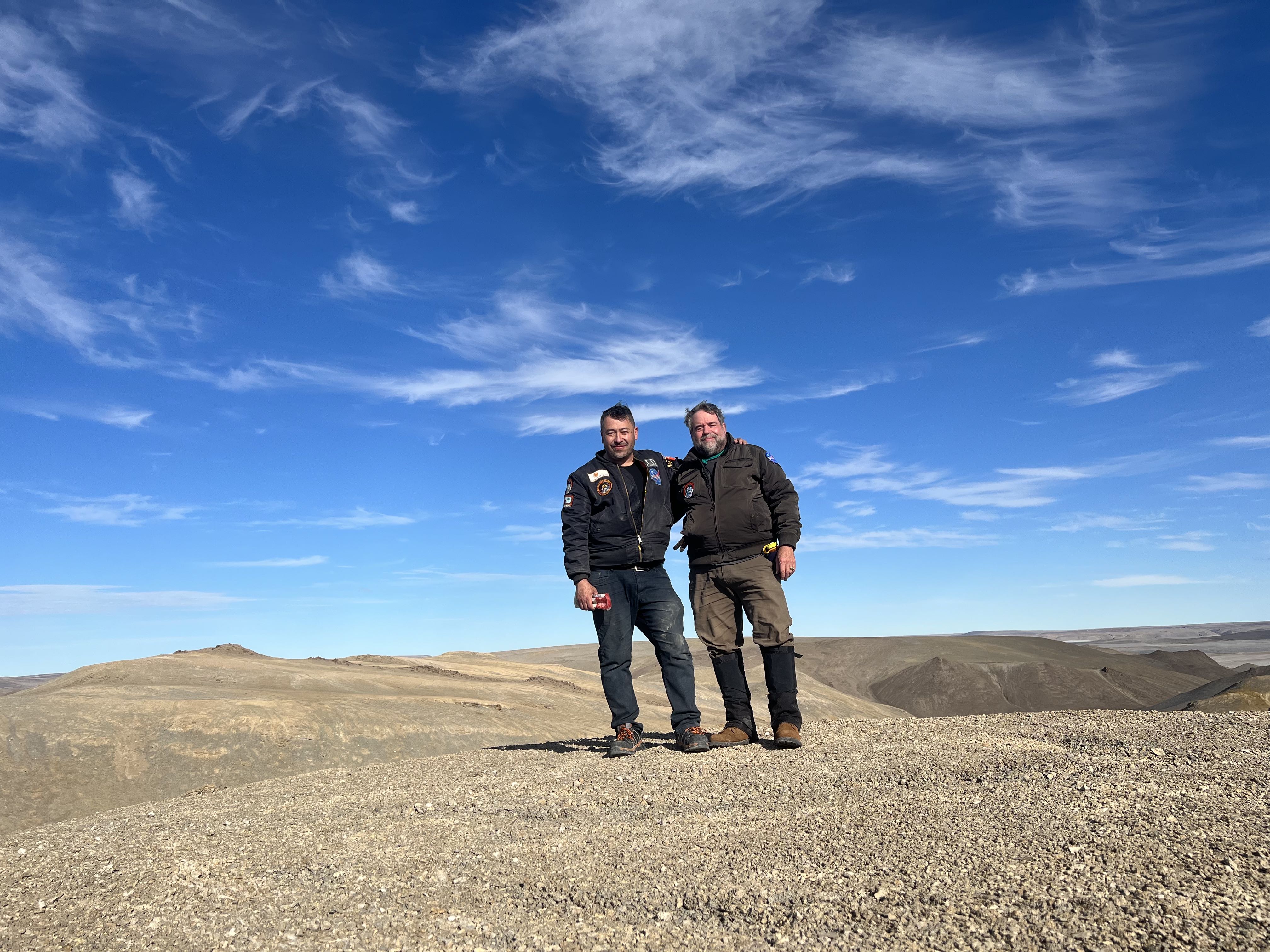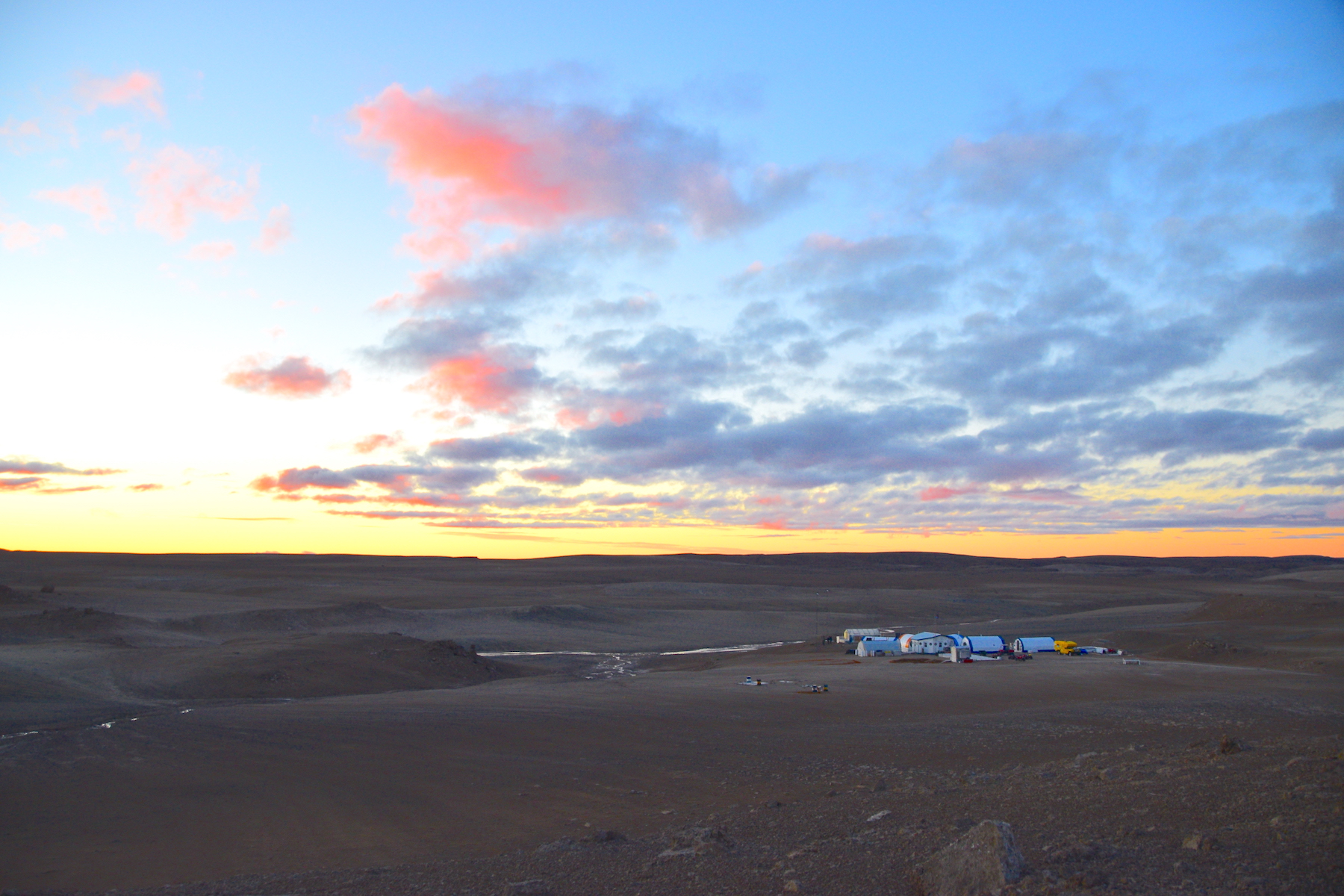A Month on 'Mars': Return to Earth

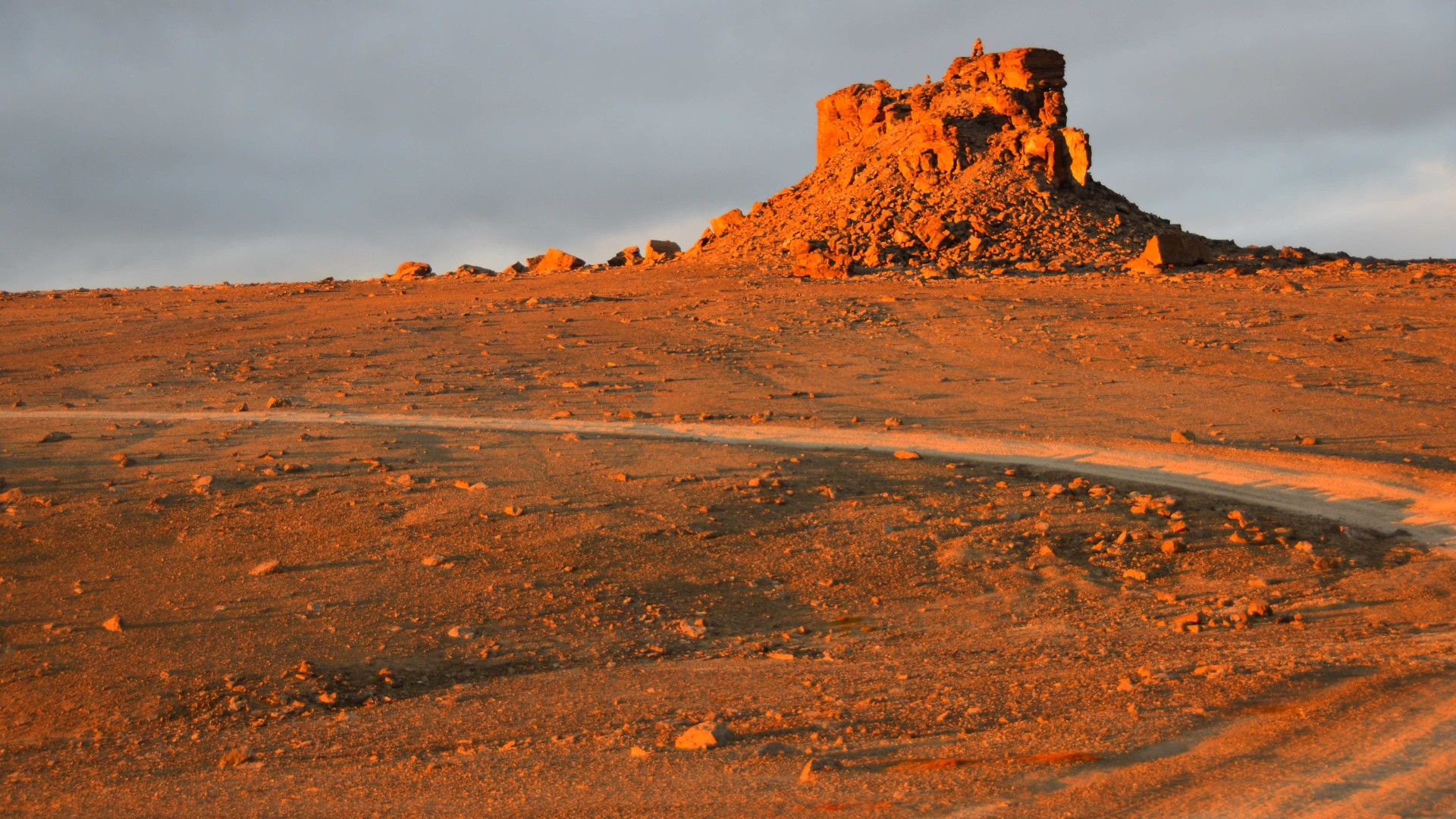
We're back in southern climes, and our month on "Mars" is already a dream, a muse, a fading memory.
The Haughton-Mars Project on Devon Island is a place where we are reminded of our frantic and violently shifting past, and one possible future. It's a realm of vast, barren, forbidding landscapes; layered with dust and grit, with rocks and formations uniformly sharp enough to cut skin. Yet the vistas are, from a distance, of soft rolling plains, punctuated with abrupt gullies, buttes, and low hills. The valleys wind sinuously from nowhere to nowhere, with occasional captured pools of crystal-clear meltwater throughout.
It is predominantly red in hue, with features carved eons ago by magnificent but vanished glaciers and continually polished by scouring, grit-filled, violent winds. And despite all the dangers of its rugged surface, it's inhabited by magic.
Related: Perseverance rover collects organics-rich Mars samples for future return to Earth
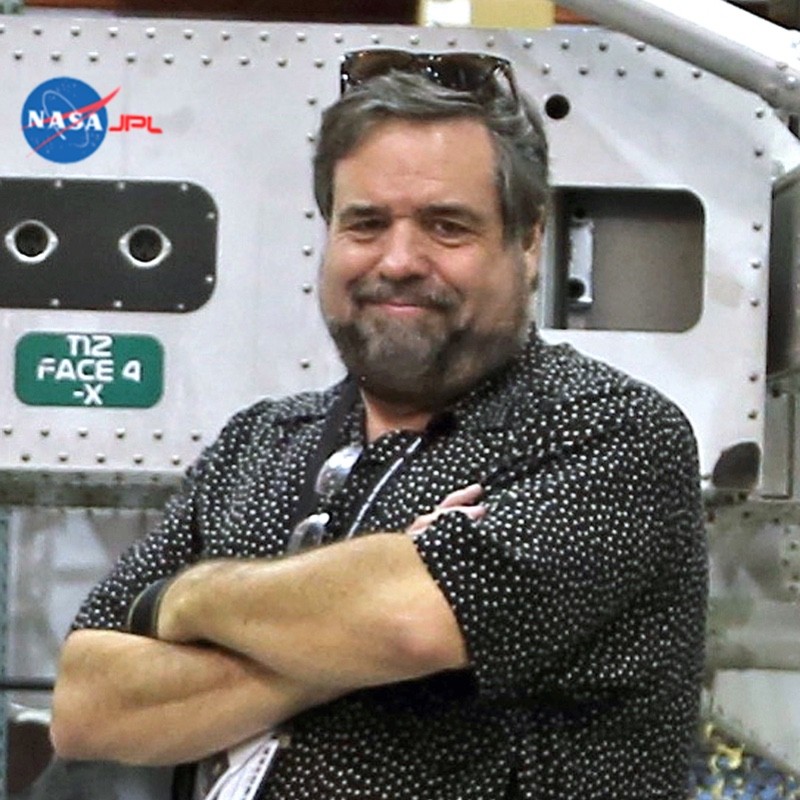
Rod Pyle is a space historian and author who has created and offered executive leadership and innovation training at NASA's Johnson Space Center. Rod has received endorsements and recognition from the outgoing Deputy Director of NASA, Johnson Space Center's Chief Knowledge Officer for his work.
Already, that striking island is receding into a softer, almost sensual memory. Yet specific impressions remain, as sharp as the ancient reefs that permeate the landscape. Wherever you look, the vista teases you with false promises of both nearness and far-off features; navigating distance by eye is impossible, as there are no objects familiar to a city dweller such as myself. No trees, no bushes, no power lines, no buildings, no nothing. That valley to the left might be two miles away or merely a few hundred yards distant, and the magnificent boulder sitting in the middle of that plain could be ten feet tall or three times that.
And at this, the mind rebels. Lateral visual estimates may be inaccurate, but this is not particularly disturbing. But the wildly erroneous impressions of z-axis distance — that is, distance from yourself to another object — agitate the primitive brain after a time. That hike you thought to be long and challenging ends up being just a mildly exerting stroll, and when you arrive at your destination, the reptilian brain calls out, "Wait up! This isn't right!" The visual physics of the place challenge the ancient hunter-gatherer in us, telling us to be cautious, be careful, and step warily. Nothing is quite as it seems here, and that awakens the caution in the irrational mind.
As we counted down the days to the large weather front that was supposed to go blasting past us in our final week, each of us had lots to do to shut down the camp for another year. We went about our chores, looking at the sky a few times per hour to see what might be coming. But despite some heavy clouds and biting winds, the weather stayed fairly mild (by arctic standards, anyway). Planes still were not flying, but where we were, conditions were moderate.
Breaking space news, the latest updates on rocket launches, skywatching events and more!
— A month on 'Mars': Preparing to visit the Red Planet ... on Earth
— A month on 'Mars': Traveling to the Red Planet
— A month on 'Mars': First journeys in our Arctic home
— A month on 'Mars': Get to know the Haughton-Mars Project
— A month on 'Mars': Trekking across the Arctic
— A month on 'Mars': Journey to the 'Planet of the Apes Valley'
— A month on 'Mars': Flags and footprints of the moon and Arctic
— A month on 'Mars': The Arctic comes alive
— A month on 'Mars': Fogbound on Devon Island
— A month on 'Mars': Trekking through Ingenuity Valley
— A month on 'Mars': Living on the EDGES
As I went through the paces to help wrap up the visit, I made a point of reflecting on the trip and making sure that I committed each experience — and the place itself —to memory, and in as vivid a way as possible. While challenging, the environment is a paradise when compared to Mars. Yes, our facilities were spartan — there are no showers or running water (there's a system that will be repaired in the future), toilet facilities are, shall we say, very basic, and there is little heating. But hey, I can step outside and breathe! The soil isn't laced with perchlorates! Solar radiation, while more intense than in mid-latitudes, is not particularly dangerous! It looks uncannily like Mars, but it's the detoxed, theme park version.
We departed in two groups after 21 days. The transport contractor called us on the morning of that last day, letting us know the first plane would be there in a couple of hours. We hurried to wrap up the tasks that needed doing by all hands, as the first group out would reduce our number by half. The MIT/Haystack team packed their radio astronomy gear and began making cargo runs out to the runway — they had at least a dozen crates and cases that needed to be taken out with them. The rest of us packed up our personal belongings and continued shutting down the camp. When you're going to be gone for a year in an environment as punishing as the Arctic, there's a lot of preparation required.
We all then proceeded to the runway for the first of two flights. Skies were clear for the first time in days, and a dazzling blue arched overhead. We heard the plane first, of course, since there are no competing sounds out there. The speck to the south resolved into a Twin Otter aircraft that swept in low over the runway, then touched down, large balloon tires throwing up gravel as it bumped down the runway, steering a broad turn to pull up next to the cargo. The crew jumped out, and we started loading the cargo that would go out with the first half of our team. They were the lucky ones — their load consisted mostly of luggage and the EDGES gear. Our flight, hours later, would be the one to carry out the trash, the garbage, and the, um, personal waste — three weeks' worth of it. Nothing stays behind.
After the plane departed, quiet descended once again. We weren't even running the generator now, a producer of white noise that had been with us for about 16 hours a day throughout our stay. We returned to camp and finalized the winterizing procedures at our leisure — most of the hard work was done.
As I wrapped up my stay, I thought back on the previous night, with clear skies and a moderate wind. While cold, it had been glorious. The generator had been turned off about 10 p.m., and as complete and total silence descended over the base, the skies began their nightly conversion into a Maxfield Parrish painting. A vivid stripe of yellow painted the horizon to the west underneath an increasingly red, ruffled cloudbank; by 11:30 the sun was dipping just below the hills and the eastern skies were infused with gentle lavenders, purples, and pinks.
I could watch this for hours, I thought, and I did. It was perhaps the fourth night I stayed up through the wee hours; I knew I'd pay for it the next day, but it was my last chance to enjoy the fairyland, multi-hour sunset and sunrise, with our star just glancing off the horizon. This is also the time of day when the landscape is painted a deep, saturated red, and the shadows crawling out from rocks, bluffs, and other features of the terrain offer sharp relief, illustrating the finer features of the area that are pinned down in full daylight. It reminded me of my first trip to India when I was traveling solo at the age of 22, looking at the Taj Majal and telling myself to burn this into my memory; I was unlikely to be back anytime soon.
Back to the following day: we were soon back at the airfield, waiting for the plane to arrive for its last trip. A mountain of refuse awaited loading. The Otter landed and we loaded up quickly — by the time we were done, there were four of us crammed into the back of the cabin with the rest of the plane filled with triple-bagged refuse, much of which did not bear thinking about.
Four more days of travel lay ahead. The Otter would drop us at Resolute Bay, where we would spend the night in dormitory-style facilities, then a long flight down to Hall Beach to pick up fuel in a larger ATR 42 turboprop plane (there was an acute fuel shortage in the frontier towns that week), then on to Iqaluit where we would spend another night. We had time to tour a couple of these stops as we waited out the flight schedule; these are stark, tough little towns with prefab buildings clinging to rocky terrain, sited along coastlines with the last remnants of winter ice adorning them like abstract ornaments. We eventually made it to Ottawa where the team went their separate ways, and Pascal and I headed back to Northern California, from where I would drive back to Los Angeles.
During that drive home, the first symptoms of COVID began to set in — both of us had somehow contracted the virus somewhere south of Ottawa, and I had to pull off multiple times to sleep off the worst of it. Two weeks of quarantine awaited me in Los Angeles. Thanks to modern medical science, however, this was to be an inconvenience instead of a death sentence, and it was a small price to pay for the joys of the trip. I was exhausted but elated; achy but more alive than I'd been in years.
I'll miss my new friends. John Barrett, Rigel Cappallo, and Jason Soo Hoo were back in Massachusetts, beginning the long task of sorting through the results of the EDGES experiment. Gabriel Dubé was back in Montreal starting his next year of school. Sawan Dalal had returned to San Diego, then Houston, where he would learn where his new medical residency would begin, and John Schutt was back in Blaine, Washington, where he would begin preparations for a long kayaking trip with his wife. When I left Pascal in Mountain View, California, he was already working through the financials for the season and beginning to prepare for the summer of 2023, with Apollo (the wonder dog!) curled up in his favorite bedding. And I was home in hot and muggy Southern California, adjusting to triple-digit temperatures.
I'll remember this trip for the rest of my days. Since my youth during the Space Race, I'd fantasized about living on Mars, a byproduct of my voracious consumption of science fiction. Humanity still has a long way to go before we take up residence on other worlds, but with the first flight of NASA's Artemis lunar program just weeks away, we would be, for the first time in a half-century, on our way. That's exquisite timing. As I waited out the COVID isolation, I had plenty of time to reflect, and realized that my long-standing hunger to understand what an existence off-Earth might be like was assuaged after decades of wondering. The reality of that experience belongs to the next generation or their successors, each of whom have their own dreams.
I wish them well, and while I envy their future adventures, I don't feel the slightest sense of longing. Mars will be a spectacular place to explore and eventually settle, and it will require the heartiest of them to do so.
For myself, I'm at peace. I've already been there.
Follow us on Twitter @Spacedotcom or on Facebook.
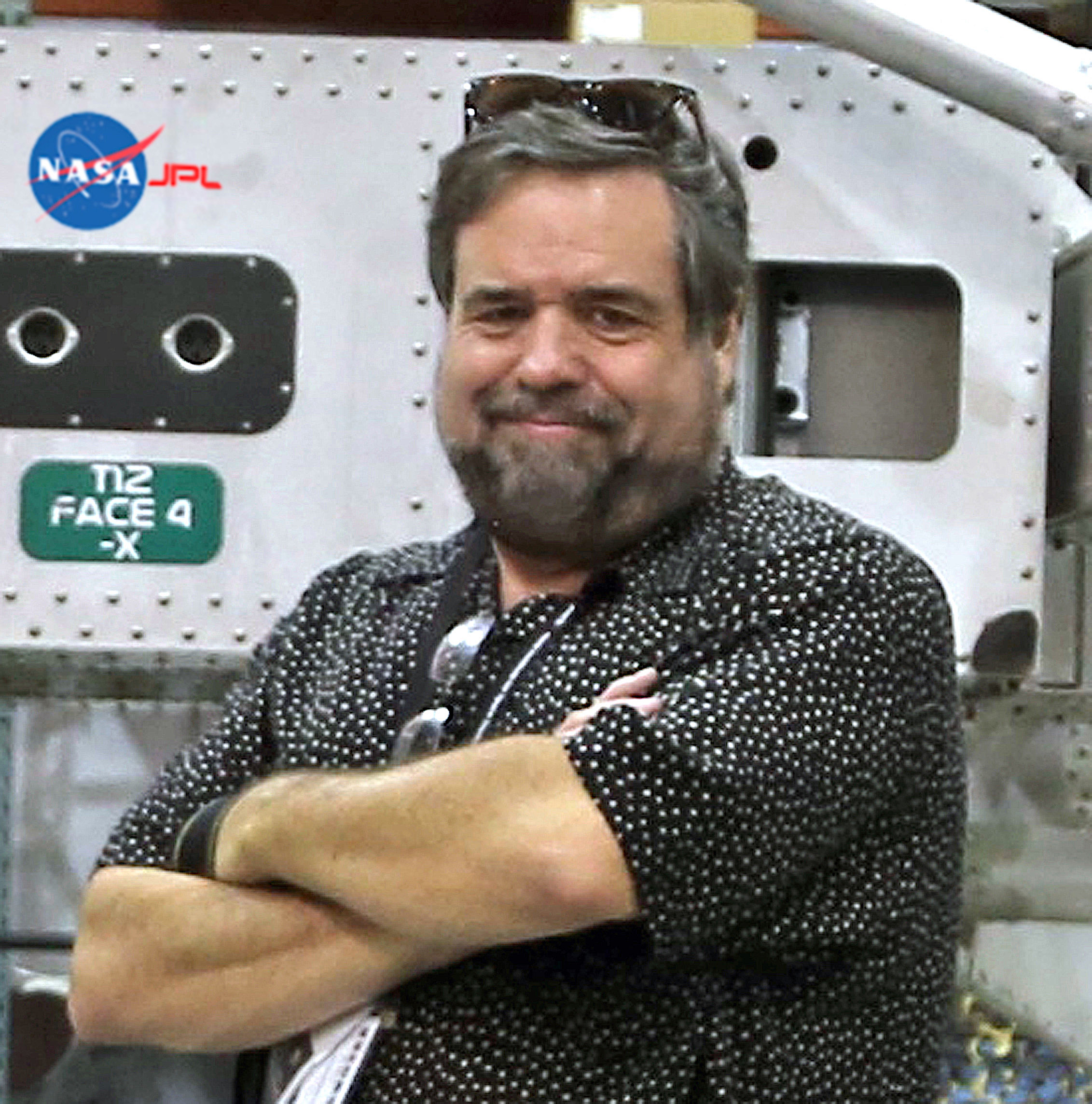
Rod Pyle is an author, journalist, television producer and editor in chief of Ad Astra magazine for the National Space Society. He has written 18 books on space history, exploration and development, including "Space 2.0," "First on the Moon" and "Innovation the NASA Way." He has written for NASA’s Jet Propulsion Laboratory, Caltech, WIRED, Popular Science, Space.com, Live Science, the World Economic Forum and the Library of Congress. Rod co-authored the "Apollo Leadership Experience" for NASA's Johnson Space Center and has produced, directed and written for The History Channel, Discovery Networks and Disney. For more information on the National Space Society, go to nss.org




